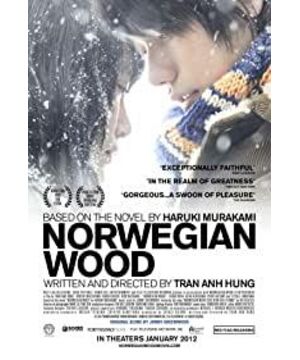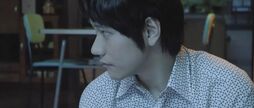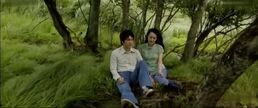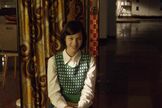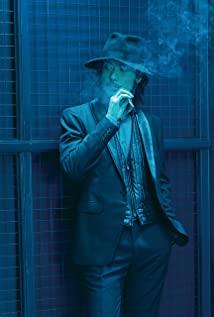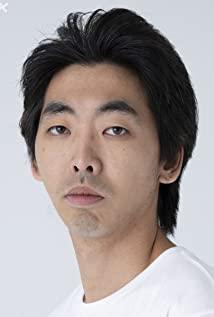About last year, when I got the news that Norway's forests would be made into a movie, I was both hopeful and terrified. I look forward to the words that accompanied me every night into a real picture, but I am afraid of disappointment, afraid that those pictures will destroy the mirage that once was hidden in my heart. Anxiously waiting for this movie. Until a few days before the Japanese release, on the promotional website of the movie, under the movie Norway's forest, side by side, Norway's sea, Norway's mountains, Norway's food, etc., a series of introductions to a trip to Norway. Seems a bit ironic to imply how well the film understands the original.
The movie started on Saturday December 11th, and I ordered Monday's movie tickets that night, just because there would be a discount on weekdays. Unfortunately, today, Monday, it rained in Tokyo, the cold rain of early winter. I should just complain that I didn't book today's ticket if I knew it was going to rain, or regret not seeing the weather forecast for three days later when I bought the ticket. But coincidentally, the rain fits the scene of the movie very well.
The reality is rain, the movie is also rain, Naoko's birthday was rainy day (the original work was also rainy day), and it was changed to rainy day when we kissed after visiting Midori's house. Watanabe's hesitation every night is also raining... That rain, it seems It reminds me all the time that the director was born in Vietnam, which is supposed to be tropical.
As a result, I clearly remember that Naoko's birthday in the novel was a rainy day. And I just remember, oh, the slightly dramatic parts of the movie are all rainy days. A flood of markers. It seems difficult to impress. The director seems to be that rainy days must be used to render sadness. In this way, presumably in the tropical climate of Vietnam, it is difficult not to suffer from depression.
This returns to the original point. Why are Haruki Murakami's novels touching? Analysed at every level, there are many answers. But from the above comparison, I think that at least one answer is that the description of the novel is very bland, using a very ordinary, natural, and unpretentious way to narrate, instead of using one kind of thing to symbolize another kind of thing rigidly. thing. For example, in the movie, rain is used to render melancholy, and the wound on the palm of the hand is used to symbolize the wound in the heart. Dragging that wound on for at least a month, it still bleeds when you pinch it. In the novel, the description is so ordinary that it can no longer be ordinary, and it is better to understand that the wound of the skin will heal, and the wound of the heart... This kind of superficial plain realism can penetrate into the heart.
What gives people a sense of reality in the novel are the markings of those places. On the day Naoko and Watanabe met in Tokyo, from Yotsuya, across Iidabashi, over Ochanomizu, and finally to Komagome, Watanabe's ryokan can see the night view of Shinjuku, Midoriko's house is in Otsuka, Toshima Ward, Nagasawa and Hatsumi went to Ginza for dinner together, and then took a walk in Shibuya with Hatsumi. I can list these place names clearly, maybe because I've been in Japan for so long. However, I also miss it very much. When I first came to Japan, on the subway or tram, I passed by a certain station unintentionally, looked at the stop sign (I couldn't hear it at the time), and then suddenly remembered, oh, this station seems to be in a Norwegian forest Has it been mentioned? This is a sense of reality. It's in the novel, but not in the movie. In the novel, there are no pictures on the streets of the small shops on both sides of the residential area, and those along the railway. In the movie, apart from the forest or the forest, Komagome is mentioned once (I don't think there is Komagome there), and there are no other locations marked. Change the vest, and those who were in the student movement were replaced by those of the Cultural Revolution. This can happen in China, or even Vietnam.
A location marker for a station scene complete, a railroad, a speeding tram. These are the daily elements of Japanese animation and Japanese dramas. It didn't even appear in this movie. I don't think this is an innovation by Vietnamese directors. Some things just can't be missed.
Differences in the way of expression between pictures and words are more mixed with differences in understanding. Regarding Mu Yue's suicide, there seems to be a sentence in the novel, I don't know how long it took to die. It took a few minutes and hundreds of thousands of frames to express the few words that were slightly more than a fingertip. Obviously a little silly. It is not the face of death that conveys grief. On the contrary, the pictures at the beginning of the novel describe those landscapes, using a lot of words. But with pictures, pictures that can be reproduced in dozens of frames. Instead, it was omitted. That drizzle of dark clouds at Hamburg airport, those flashbacks of scenery and dialogue. On the contrary, it is the best way to increase the realism of the story and the melancholy atmosphere due to the impact of time. Imagine if the opening sequence had a lot of erratic flashbacks, and then the story started. In the audience's psychology, it will create a feeling that this story is a memory and a real feeling. And the director didn't.
As for the role, in the novel, Midori has self-assessed that her breasts are good, but in the movie, Midori has no breasts at all (forgive me if you like that actor). When Naoko yelled hysterically every time, I wondered, didn't Naoko die because he couldn't express his feelings? Contrary to Naoko, the hysterical yeller in the movie, Naoko only cried twice in the novel, on her birthday night, and later when she mentioned Muyue in the nursing home. I miss Naoko who walked in front, aimlessly, and didn't say a word for hours.
This movie is beautiful and the scenery is poetic. Unfortunately, I can not be satisfied with these superficial beauty. This shouldn't just be an illustration for a novel. I began to miss many short stories of Midori in the book, the story of wearing a wet bra to save money to buy kitchen utensils, the difference between the rich and the poor, and the experience of visiting Chiba's girlfriend's house as a guest. In the movie, Midori can hardly tell any stories other than sexual fantasies. Or maybe the way I see things is different, and I start to miss the side stories in the novels. The story of Reiko, and even the story of the art student who met Watanabe when he was working part-time.
The misty mountains, the green grass and the fluttering snowflakes, together with the soothing and melancholy Norwegian Wood. Gave us a lot, but also a lot less. I've said a lot, I'm not saying the movie is bad, maybe I'm trying to say it's not good enough, or wishing it could be better.
The film reproduces the story full of confusion, sadness, and love 40 years ago with a beautiful image of 24 frames per second that is not perfect.
View more about Norwegian Wood reviews


